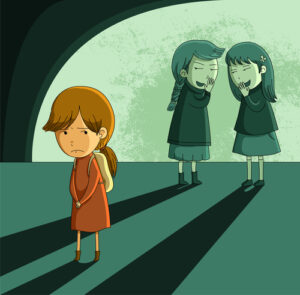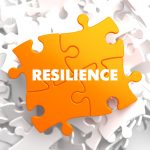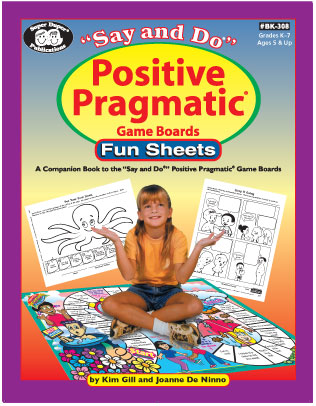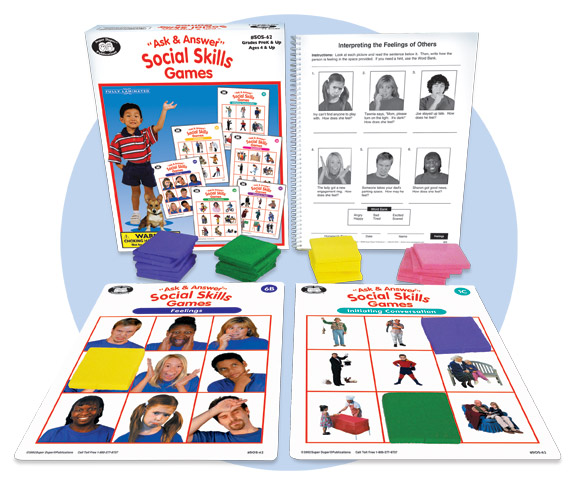Related Products
For Parents
Related Teacher Tools Takeout Items
Reducing the Impact of Stigma and Teasing
 Peer Victimization and Hearing Loss
Peer Victimization and Hearing Loss
More than ¼ of school-aged children experience bullying or peer-victimization. The risk of this negative treatment increases for children who have lower social competence, presence of special needs, or overall seem “different” from their peer group.
In general, adolescents who do not “fit in” experience twice the rate of peer victimization than the general population. Adolescents with special needs are most frequently teased, gossiped about, and socially excluded.
Children with hearing loss have a higher risk of peer victimization due to the visibility of their hearing devices, poorer speech perception, articulation/ pronunciation differences, delays in language skills, social difficulties, and difficulty making and maintaining peer relationships. A 2012 study reported the incidence of peer victimization for children with hearing loss ranging from 17-67% dependent upon the degree of difference perceived by typical peers.
A recent study1 was conducted on peer victimization of children with hearing loss who wore hearing devices, communicated orally, and were educated in the mainstream classroom. The study included 56 children ages 12-18 years. Their mean age for hearing device fitting was 3.3 years and they averaged 10.8 years of experience using their hearing devices. These participants completed a series of questionnaires exploring their communication competence, social competence, temperament, and level and type of peer victimization.
 The results of this study found that adolescents who used hearing devices reported significantly higher rates of victimization than those in the general population (50% versus 28%). Compared to the general adolescent population, adolescents with hearing loss reported the following prevalence: teasing (25.8% versus 18.8%), rumors (21.1% versus 16.5%), and social exclusion (26.3% versus 4.7%), and coercion (17.5% versus 3.6%). Males and females experienced victimization at similar rates, but the type of victimization varied with males having higher rates of coercion and females having higher rates of social exclusion.
The results of this study found that adolescents who used hearing devices reported significantly higher rates of victimization than those in the general population (50% versus 28%). Compared to the general adolescent population, adolescents with hearing loss reported the following prevalence: teasing (25.8% versus 18.8%), rumors (21.1% versus 16.5%), and social exclusion (26.3% versus 4.7%), and coercion (17.5% versus 3.6%). Males and females experienced victimization at similar rates, but the type of victimization varied with males having higher rates of coercion and females having higher rates of social exclusion.
The bullied and non-bulled groups of students with hearing loss did not differ on measures of communication competence, social competence, temperament, or behavior. Children from families with lower socioeconomic states and parenting styles characterized by abuse or overprotection have higher victimization rates, whereas those who have supportive family relationships are more protected against the impact of bullying.
Peer victimization demands attention from both parents and professionals.
Stigma and Hearing Loss
Among adults not pursuing hearing care, 21% described hearing aids as “too embarrassing”, 15% described them as “unattractive”, and 14% claimed hearing aids were “too noticeable”. These all represent the perceived stigma of having a hearing loss. Stigma can be divided into two types:
 External or environmental stigma – messages that people with hearing loss receive from other people, such as impatience, embarrassment, discomfort, or anger related to increased communication difficulty with the person who has the hearing loss. Examples of environmental stigma for children could include a teacher looking annoyed when a child drops of the HAT microphone, being ignored by classmates during group work, or any type of teasing or other peer-victimization. Home examples could include being excluded from family conversations, being discouraged to use hearing devices in public “so people don’t know,” or being yelled at for not following a parent’s instructions because the direction was not heard.
External or environmental stigma – messages that people with hearing loss receive from other people, such as impatience, embarrassment, discomfort, or anger related to increased communication difficulty with the person who has the hearing loss. Examples of environmental stigma for children could include a teacher looking annoyed when a child drops of the HAT microphone, being ignored by classmates during group work, or any type of teasing or other peer-victimization. Home examples could include being excluded from family conversations, being discouraged to use hearing devices in public “so people don’t know,” or being yelled at for not following a parent’s instructions because the direction was not heard.
Internal stigma – negative messages that people with hearing loss tell themselves that are triggered by the embarrassment, vulnerability, shame, and/or fear they feel as they anticipate or experience increased communication challenges. Examples of internal stigma for children could include eating lunch alone because it is too hard to understand what peers are saying in the noisy environment, not wanting to participate in class discussions because of experiences providing an answer to a question different than the one asked, or not requesting clarification or repetition of information missed auditorily because they don’t want to “stick out.” A home example includes the child isolating himself from family activities or acting out behaviorally because he cannot readily understand what is being said and has received impatient or angry responses when asking for clarification.
Strategies to Reduce the Impact of Stigma and Peer-Victimization
Dealing with stigma and teasing or bullying can have far-reaching effects on school performance and self-concept. Students who expect that negative consequences will occur when they self-advocate or use their hearing devices are much more likely to reject use of their devices and not fully participate in the general education curriculum. There are some strategies in common, and some different when helping children develop resilience in dealing with these issues.
Addressing Victimization and Stigma
1. Issues related to stigma and peer victimization can be included on IEPs or 504 plans, for example:
a. Specify the need to inform teachers and classmates about hearing loss to reduce negative responses to the student and/or hearing devices.
b. Provide a safe environment statement designing a “home base” where a student can go when feeling unsafe or a “safe person” with whom a student can discuss difficult situations.
c. IEPs can include strategies to reduce vulnerability and improve response to bullying by targeting response to bully and social pragmatic skills, via 1:1 instruction, role playing, or social stories.
d. IEPs can target self-advocacy and communication repair skill development, including addressing assertiveness. Work on changing “I can’t” statements to “I can” to improve resilience when negative situations occur.
e. IEPs can target the student’s knowledge of their hearing loss and hearing devices, including understanding their most challenging listening situations, what they or others can do to improve their communication effectiveness. Students should learn and practice how to describe their hearing loss, including how to respond to questions about their hearing loss and hearing devices.
2. Identify if the student is one of the approximately 50% of students with hearing loss who are victimized. Ask the child directly if they have experienced bullying and if so, what kind (coercion, social exclusion, physical harm, gossip, teased). When is the victimization happening? In the classroom? Hall? Bus stop? How pervasive is this treatment? Help them understand that many, if not most, students experience some type of peer victimization at some point during their school years. They are not alone.

Resilience on Orange Puzzle on White Background.
3. Education about WHY students become bullies, what they get out of bullying someone, and what keeps a bully coming back for further bad treatment will help the student understand that they are not the only victims. This also goes for groups who exclude or coerce students, not only teasing situations. In the IEP include a goal to teach the specifics of what NOT to do in each of these situations, along with appropriate responses.
4. 4. Use the Kool Kidz Vidz available to members on Teacher Tools Takeout to expose ‘one and only’ students who use hearing devices in their schools to other students with hearing loss who have had the same experiences with stigma from hearing loss. The discussion points provided with each Kool Kidz Vid make these easy ‘go to’ materials with a potential for high impact.
5. Connecting students who use hearing devices with one another may have the most powerful effect on reducing the impact of stigma and bullying by strengthening self-concept, self-confidence to self-advocate, while reducing feelings of isolation. IEP goals for self-advocacy can be met via group work (face-to-face or virtually) with DHH peers using devices. Students who come into contact with DHH peers are less likely to reject use of their hearing devices. As a group:
a. Discuss all types of peer victimization with a pair of DHH peers or a larger group of DHH peers. Encourage discussion of which types of negative treatment have been experienced.
b. Discuss both external and internal stigma along with individuals having the power to overcome negative messages as part of their journey figuring out who they are and who they want to become (goals for after high school).
c. Talk about the perception of “different” and how this increases the risk for victimization. Help students work through the concept that it is the hearing loss that makes them different and this cannot be changed. Hearing devices help them behave more normally (less “different”) because they can hear, comprehend, and respond in social situations better than if they were not using hearing devices.
Resources used for this article:
Peer Victimization of Children with Hearing Loss, A. D. Warner-Czyz, Hearing Journal, Oct, 2018.
Incorporating Stigma Counseling into Audiology Practice, H. Cohen & N. M. Williams, Hearing Journal, Sept, 2018.




